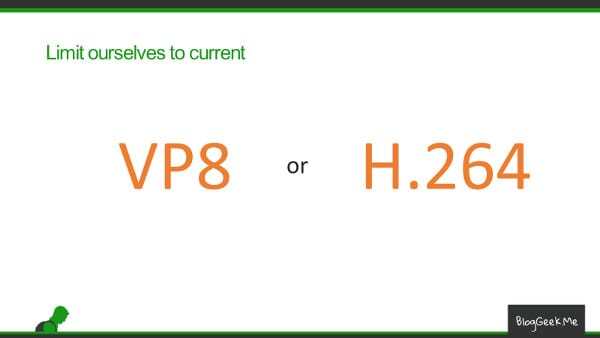No simple answer.

Apple recently announced that Safari will be supporting WebRTC. That support isn’t there yet to the point where it is stable enough, but we already know one thing:
Safari supports only the H.264 video codec.
Codec wars are over? 2 MTI (mandatory to implement) codecs in the form of VP8 and H.264?
Who cares?
Reality is that Apple decided at this stage not to support VP8 – and it hasn’t said anything about plans to support or not support VP8 in the future. That said, all signals indicate that support for VP8 in Safari is unlikely to happen.
This brings us to a simple yet challenging question:
When writing a WebRTC application. Should you make use of VP8 or H.264?
The answer isn’t a simple one. Choosing VP8 will leave you without Safari. Choosing H.264 will leave you without other important features and capabilities, as well as create a potential legal headache.
This is why I decided to create a new free video mini course – to guide you through the process and help you make the best decision here.
This video course, Picking a WebRTC Video Codec, is free and includes 4 lessons and a cheat sheet.

how can I view the videos?
There’s a button at the end of the article (above the comments) that should popup the subscription box for it.
You receive them via email.
Hi Tashi,
Seems Apple is focused on supporting High Efficiency Video Coding (HEVC), H.265. Given the newly announced smartphones (iPhone 8 & iPhone X) and Apple’s ability to create their own custom hardware for mobile devices (hardware accelerated H.265) and soon to appear in Apple laptops, I expect Apple will support H.265 within Safari hence Apple’s WebRTC implementation will more them likely support H.265 as well as FaceTime across all operating systems (macOS, iOS, AppleTV, watchOS) and other Apple applications in the future. Your thoughts always appreciated.
Ron
I share your views about where Apple is headed with its own interests. That said, H.265 is a world of pain. It is hard to see how others follow suite in that direction. VP9 and later AV1 pave the other potential route to the future of video coding.